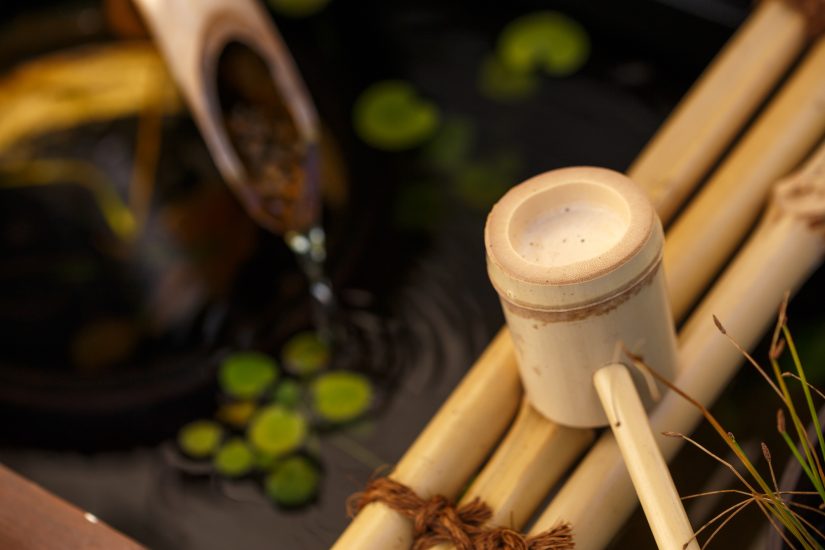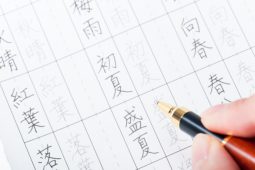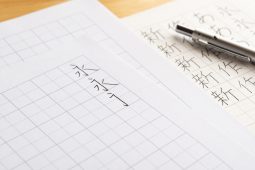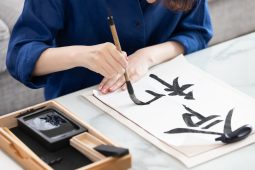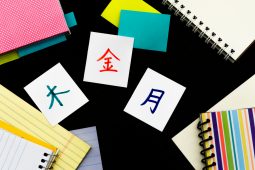If you ever live in Japan, sooner or later you are going to encounter the kanji character 和. Pronounced “wa” it is frequently used as a prefix in kanji compounds to mean “Japanese” or “Japanese style”. Here are some examples:
和紙 (washi) = Japanese paper
和歌 (waka) = a (classical) Japanese poem
和服 (wafuku) = Japanese (traditional) clothes
和室 (washitsu) = a (traditional) Japanese style room
和風 (wafū) = Japanese style
和語 (wago) = a native Japanese word
The use of 和 to confer a very pure and traditional sense of “Japaneseness” is ubiquitous in the Japanese language. However, “Japanese” is actually not the primary meaning of this character. Its original meaning is “harmony,” and “Japanese” is a secondary meaning that the Japanese chose for themselves.
“Wa” is the oldest recorded name for Japan, and occurs in several ancient Chinese texts. However, the Chinese used a different kanji for this name: 倭. Unfortunately, this character also has the rather unflattering meaning of “dwarf”, and not surprisingly the Japanese didn’t like it. Sometime in the 8th century they decided to switch 倭 for 和 which had the same pronunciation, but the much more pleasing meaning of “harmony”. The Japanese also borrowed the same kanji to write the name of the Yamato kingdom from which the nation of Japan is descended. Written 大和 which literally means “Great Wa” these two kanji together are pronounced “Yamato”. 大和魂 (yamato-damashii) is another term that was coined around the same time to express the concept of “the Japanese spirit”; the integral values of the Japanese people and their culture.
The fact that the Japanese chose this character to name themselves is very telling. “Wa” meaning “harmony” was a very important concept in Japan’s formative years. Influenced by Chinese Confucian and Buddhist philosophies the legendary regent Prince Shōtoku (574 – 622) specifically wrote和into his constitution for the Japanese nation. In this document which laid the moral framework of Japan as a nascent nation state, Prince Shōtoku wrote, “Harmony should be valued and quarrels should be avoided. …when the superiors are in harmony with each other and the inferiors are friendly, then affairs are discussed quietly and the right view of matters prevails.”
和 is still a big part of how the Japanese see themselves. The kanji appears in Japan’s newest era name: 令和 or Reiwa, and和has actually been used in era names on 19 previous occasions. Also, the ideal state of social harmony as expressed by 和 is still an integral part of what makes Japan tick. Group values and the welfare of the community are seen as more important than individual ambitions or desires. A good citizen is one who contributes to the overall “wa” and this brings peace (or 平和 heiwa) and accord (or 調和 chōwa). Frequently, commentators on Japanese culture will contrast this group ethic with the more individualistic culture of Western societies. Sometimes this emphasis of the group over the individual is seen in a negative light. In demanding social unity, individuality can be lost and individual rights suppressed. However, a closer look at the etymology of the character和 shows us that this should not be the case.
和 is composed of two parts. On the left is 禾 which represents an ear of grain. On the right is 口 which represents a mouth. Some scholars say that the grain represents flexibility and softness. We can see this meaning in some of the kanji’s Japanese readings:
和らぐ (yawaragu) – to soften, to calm
和らげる (yawarageru) – to soften, to moderate, to relieve
和む (nagomu) – to be softened, to calm down
口 on the other hand is suggestive of speech, and different voices singing in harmony.
Another explanation of this character’s origin is that禾 together with 口 is suggestive of grain in the mouth, and thereby something delicious. A good meal is one in which different ingredients are brought together and mixed so that their various flavors are harmonized into a satisfying whole. Although, it has been suggested that 和 in Japanese culture can be suppressive of individuality, in this kanji’s origins we can see an understanding that group harmony is actually dependent on different, distinct elements that complement and enhance each other. There’s a whole lot of meaning wrapped up in 和.


